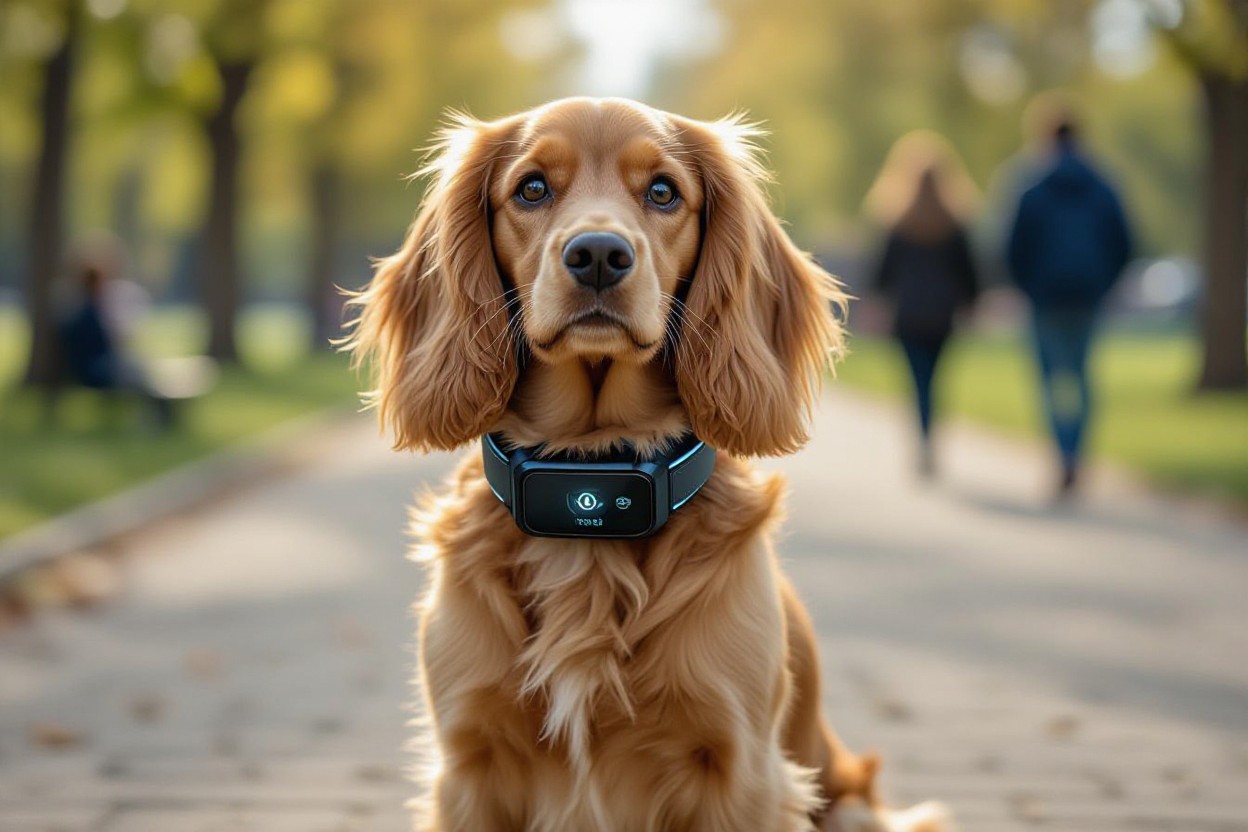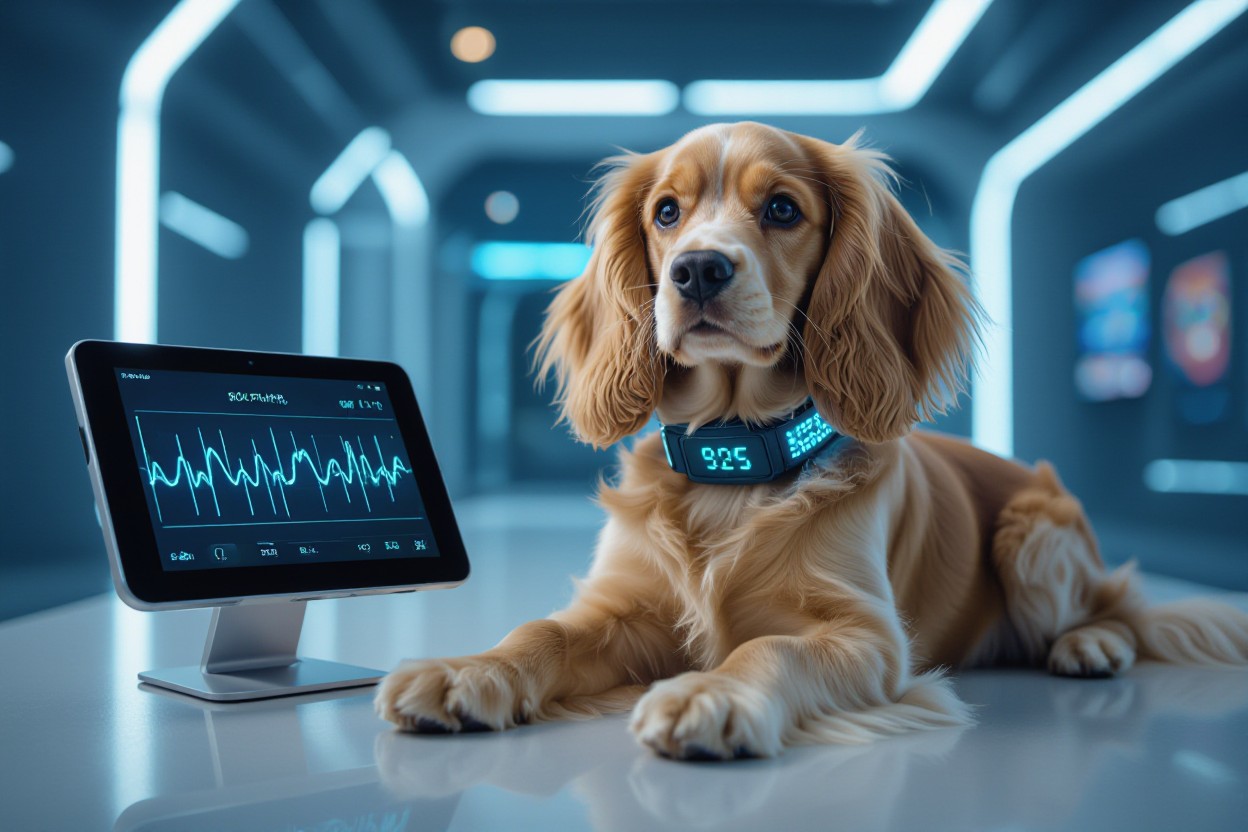Technology is rapidly evolving to bridge the gap between you and your Cocker Spaniel, offering new ways to understand their barks and behavior. With AI bark translator collars, you can gain insights into what your dog is trying to communicate, decoding their unique sounds into meaningful messages. This innovative approach helps you connect with your pet on a deeper level, enhancing your ability to meet their needs. In this post, you’ll learn how AI bark translators work for Cocker Spaniels and what this means for the future of pet communication.
Key Takeaways:
- AI bark translator collars use machine learning to analyze the unique vocal patterns of Cocker Spaniels.
- These devices capture bark sounds and correlate them with specific emotions or needs, such as hunger, playfulness, or anxiety.
- How AI bark translators work for Cocker Spaniels involves training algorithms on extensive datasets of Spaniel barks combined with observed behaviors.
- The technology aims to bridge communication gaps between dogs and their owners by providing real-time insights.
- While promising, AI bark translators are still evolving and can vary in accuracy depending on individual dog’s vocal nuances.
- Many AI systems also incorporate additional indicators like tail movement and body posture for more precise interpretation.
- Future advancements could make AI bark translator technology a staple tool for pet care and training tailored to specific breeds like Cocker Spaniels.
The Science of Bark Translation: What Really Happens Inside the Collar
AI bark translator collars use a combination of sound analysis and machine learning to interpret your Cocker Spaniel’s vocalizations. Each bark’s pitch, duration, and frequency are recorded and processed to match behavioral cues, giving you insights into what your dog might be feeling or trying to communicate. These devices don’t just listen; they analyze context, such as activity level or environmental sounds, refining accuracy to offer meaningful interpretations rather than just noise recognition.
Sensors and Algorithms: How Technology Captures Bark Patterns
The collar’s sensors pick up barking through highly sensitive microphones, filtering out ambient noise to isolate your dog’s unique sound signatures. Algorithms then break down these patterns into data points like tone, volume, and repetition. Advanced neural networks trained on thousands of Cocker Spaniel barks identify subtle differences between barks signaling excitement, distress, or curiosity, enabling personalized decoding tailored specifically to your dog’s bark characteristics.
Linguistic Models: Translating Barks into Understandable Language
Once sound patterns are digitized, linguistic models work by comparing bark data against a database of known vocalizations linked to specific behaviors or emotional states. These AI systems combine acoustic analysis with behavioral context—such as tail wagging or posture—to generate human-friendly translations like “I’m hungry” or “I want to play,” helping you respond appropriately.
These linguistic models employ techniques similar to those used in human speech recognition but adapt them for canine communication’s nuances. For example, convolutional neural networks classify bark spectrograms, while recurrent models interpret sequences over time, capturing changes in bark intensity or duration. Over time, the AI personalizes translations by learning your Cocker Spaniel’s unique vocal habits, making the collar’s feedback increasingly accurate and context-aware as you use it.
Behavioral Nuances: Listening Beyond the Barks
Your Cocker Spaniel’s communication goes far beyond simple barking sounds. AI bark translators for dogs probe into variations in pitch, duration, and repetition patterns, which reveal subtle behavioral cues. For example, a short, sharp bark may indicate alertness, while longer, drawn-out barks often signal distress or excitement. By analyzing these nuances within moments, the technology helps you interpret your dog’s intentions more accurately, bridging the gap between instinctive canine behavior and your daily understanding.
Contextual Cues: Understanding Body Language Alongside Vocalizations
AI bark translators increasingly integrate sensors that monitor physical cues like tail wagging, ear position, and posture, adding imperative context to vocal data. For your Cocker Spaniel, a wagging tail combined with a playful bark typically signifies happiness, whereas a stiff stance paired with growls suggests discomfort or caution. This multisensory approach allows you to decode your dog’s mood and intentions more holistically, making your responses more timely and empathetic.
Emotional States: Decoding Happiness, Anxiety, and Other Feelings
By examining bark frequency alongside physiological indicators such as heart rate and breathing patterns, AI bark translators can differentiate emotional states like joy, anxiety, or frustration. For instance, your Cocker Spaniel’s excited yips during play contrast sharply with the repetitive, urgent barks that often accompany stress or fear. This emotional decoding helps you respond appropriately to your dog’s needs, enhancing your bond through better communication.
Going deeper, some AI systems use neural networks trained on thousands of recorded Cocker Spaniel vocalizations paired with behavioral observations to classify emotional states with over 85% accuracy. If your dog exhibits nervous whining followed by rapid barking, the collar can suggest possible causes such as separation anxiety or environmental triggers. This level of insight not only improves day-to-day interactions but can also assist in early detection of behavioral issues, allowing you to adjust training or environment proactively.
Cocker Spaniels Unleashed: Why This Breed Benefits Most from AI Translators
Cocker Spaniels‘ rich vocal range and expressive behavior create a perfect scenario for AI bark translators to shine. Their tendency to communicate a wide spectrum of emotions—from excitement to anxiety—means you get more actionable insights from AI devices designed with breed-specific data. By tapping into the unique acoustic patterns of your Cocker Spaniel’s barks, AI can help decode subtle shifts in mood or health, enriching your understanding and interaction with your furry companion on a daily basis.
Unique Vocalizations: What Sets Cocker Spaniels Apart
Cocker Spaniels produce a variety of barks and vocal cues that differ significantly from other breeds. Their distinct “playful yips,” soft whining, and urgent alert barks each carry unique frequencies and tones. AI bark translators trained specifically on these vocal signatures become finely tuned instruments, distinguishing between a call for attention, a hunger cue, or signs of distress much more accurately than generic models.
Intelligence and Temperament: How These Traits Influence Communication
With an IQ comparable to Border Collies, Cocker Spaniels display remarkable problem-solving skills and emotional sensitivity. This intelligence combined with their affectionate and sometimes anxious temperament creates layered communication patterns. AI bark translators recognize these nuances, interpreting not just what your dog is signaling, but understanding emotional context behind each bark or whine.
The emotional depth and cognitive agility of Cocker Spaniels mean their vocal patterns are influenced by both internal states and external stimuli. AI algorithms analyze these variations by processing real-time audio alongside behavioral cues captured through wearable sensors. For example, when your Cocker Spaniel barks anxiously during thunderstorms or happily upon your return, the AI differentiates these responses by cross-referencing bark frequency, pitch, and context, providing you with precise, timely feedback that goes beyond simple sound recognition.
The Future of Pet Technology: Beyond Bark Translators
Emerging pet tech goes far beyond simply decoding barks. Devices combining AI with biometric sensors now monitor your Cocker Spaniel’s heart rate, activity, and stress levels in real time. Imagine collars not only translating vocalizations but also predicting anxiety or health issues before they escalate. Such innovations could transform how you respond to your furry friend’s needs, offering a comprehensive view of their emotional and physical state through your smartphone. This convergence points toward a future where pet communication merges seamlessly with wellness tracking for more attentive care.
Integrating AI with Other Pet Care Technologies
Pairing AI bark translators with smart feeders, GPS trackers, or health monitors amplifies their value by creating a connected ecosystem around your dog. For example, if an AI collar detects distress barks, an integrated feeder might dispense calming treats, or a GPS device could alert you if your Cocker Spaniel wanders off. This synergy helps you respond holistically, addressing behavioral cues alongside physical health or location data, all managed conveniently through unified apps on your phone.
Ethical Considerations and the Human-Animal Bond
Technology that deciphers your Cocker Spaniel’s barks must balance innovation with respect for your pet’s autonomy and privacy. You’ll want to consider how constant monitoring affects your dog’s natural behaviors and whether increasingly digital communication risks overshadowing intuitive, face-to-face bonding. Thoughtful use of AI should enhance your connection rather than replace the unique emotional exchange you share with your pet.
Considering ethical aspects further, the deployment of AI that interprets your dog’s vocalizations raises questions about data ownership and consent—issues often overlooked in pet tech. Unlike human conversations, your pet cannot consent to constant audio recordings, so limiting data use to immediate, improved care rather than extensive profiling is key. Maintaining your dog’s welfare involves setting boundaries on monitoring frequency and ensuring technology complements, not controls, your mutual interactions, preserving the trust and affection at the heart of your relationship.
Real-World Applications: How Pet Owners are Embracing AI Bark Translators
Many Cocker Spaniel owners have integrated AI bark translator collars into their daily routines, transforming how they interpret their dogs’ needs and moods. These devices not only help clarify vocal signals during playtime or rest but also assist in identifying stress or discomfort early. By providing real-time feedback via smartphone apps, owners can respond promptly, fostering stronger bonds and reducing anxiety for their pets. In households with multiple dogs, the technology helps distinguish individual barks, making communication more personalized and effective.
Success Stories: Case Studies from Cocker Spaniel Owners
Several Cocker Spaniel owners report noticeable improvements in understanding their dogs after using AI bark translators. Here are a few documented examples:
- A New York owner reduced anxiety-induced barking by 40% within two weeks by identifying distress signals through a collar alert system.
- In California, a family found that recognizing their Cocker’s hunger-related barks via the translator reduced mealtime confusion and improved feeding schedules by 30%.
- A professional trainer in Texas used the technology to detect subtle behavior changes, increasing training efficiency by 25% in Cocker Spaniels.
- One UK-based pet sitter used AI insights to help a newly adopted Cocker Spaniel adjust to its home environment faster, reducing separation anxiety episodes from 5 to 1 per week.
Challenges and Limitations: The Current State of Technology
AI bark translators still face hurdles, particularly in accurately interpreting a Cocker Spaniel’s complex vocalizations across different contexts. False positives can occur, and the device’s effectiveness heavily depends on the quality of training data and calibration for each individual dog. Variations in environmental noise and mixed-breed barks sometimes confuse the algorithms, limiting universal reliability.
Continued advancements in machine learning and expanded datasets aim to overcome current inaccuracies. However, AI translators should complement—not replace—your observational skills. At this stage, understanding your dog’s body language and context remains crucial alongside the technology’s insights, ensuring you respond appropriately to their needs.
Conclusion
With these considerations in mind, you can appreciate how AI bark translators for dogs are evolving to better understand your Cocker Spaniel’s unique vocal patterns and behavior. While the technology is not yet perfect, it offers a promising glimpse into enhancing communication between you and your pet. By using AI bark translator collars, you gain valuable insights that help strengthen your bond and respond more effectively to your dog’s needs. Embracing this technology lets you explore a new level of interaction with your furry companion.
FAQ
Q: What is an AI bark translator for dogs?
A: An AI bark translator for dogs is a device or software that uses artificial intelligence to analyze a dog’s barks and vocalizations. By interpreting patterns, tones, and frequencies, it attempts to convert these sounds into human-understandable meanings, helping owners better understand their pet’s emotions or needs.
Q: How do AI bark translators work for Cocker Spaniels specifically?
A: AI bark translators designed for Cocker Spaniels focus on their unique vocal patterns and common behavioral cues. They use machine learning algorithms trained on large datasets of Cocker Spaniel barks combined with observed behaviors to identify specific emotional states such as anxiety, excitement, or distress.
Q: Can AI bark translators accurately interpret all types of barks?
A: While AI bark translators are improving rapidly, no device can perfectly interpret every bark or vocalization yet. These tools provide likely interpretations based on sound patterns and context but may sometimes misinterpret signals, especially in complex or mixed emotional situations.
Q: Are AI bark translators suitable for all dog breeds or just Cocker Spaniels?
A: Many AI bark translators are designed to work across various breeds, but models trained specifically for Cocker Spaniels tend to be more accurate for that breed because they account for its particular bark characteristics. However, general devices can still provide useful insights for many dog breeds.
Q: What types of data or inputs do AI bark translators use besides barking sounds?
A: Besides analyzing barking sounds, some AI bark translators incorporate additional data such as tail movement, body posture, and environmental context. These inputs help create a more comprehensive understanding of a dog’s emotional state and improve the accuracy of translations.
Q: How can owners benefit from using an AI bark translator for their Cocker Spaniel?
A: Owners can gain a better understanding of their Cocker Spaniel’s emotional needs and behaviors, potentially improving communication and reducing misunderstandings. This can lead to enhanced bonding, more effective training, and quicker responses to health or anxiety-related issues signaled through vocalizations.
Q: What are some limitations of current AI bark translator technology for dogs?
A: Current AI bark translators may struggle with interpreting context-specific or subtle barks, and they often rely on large amounts of breed-specific data, which may not be available for all dogs. Additionally, variations in individual dogs’ vocalizations and external noises can affect accuracy. These technologies should be used as supplementary tools rather than sole methods of understanding a pet.


